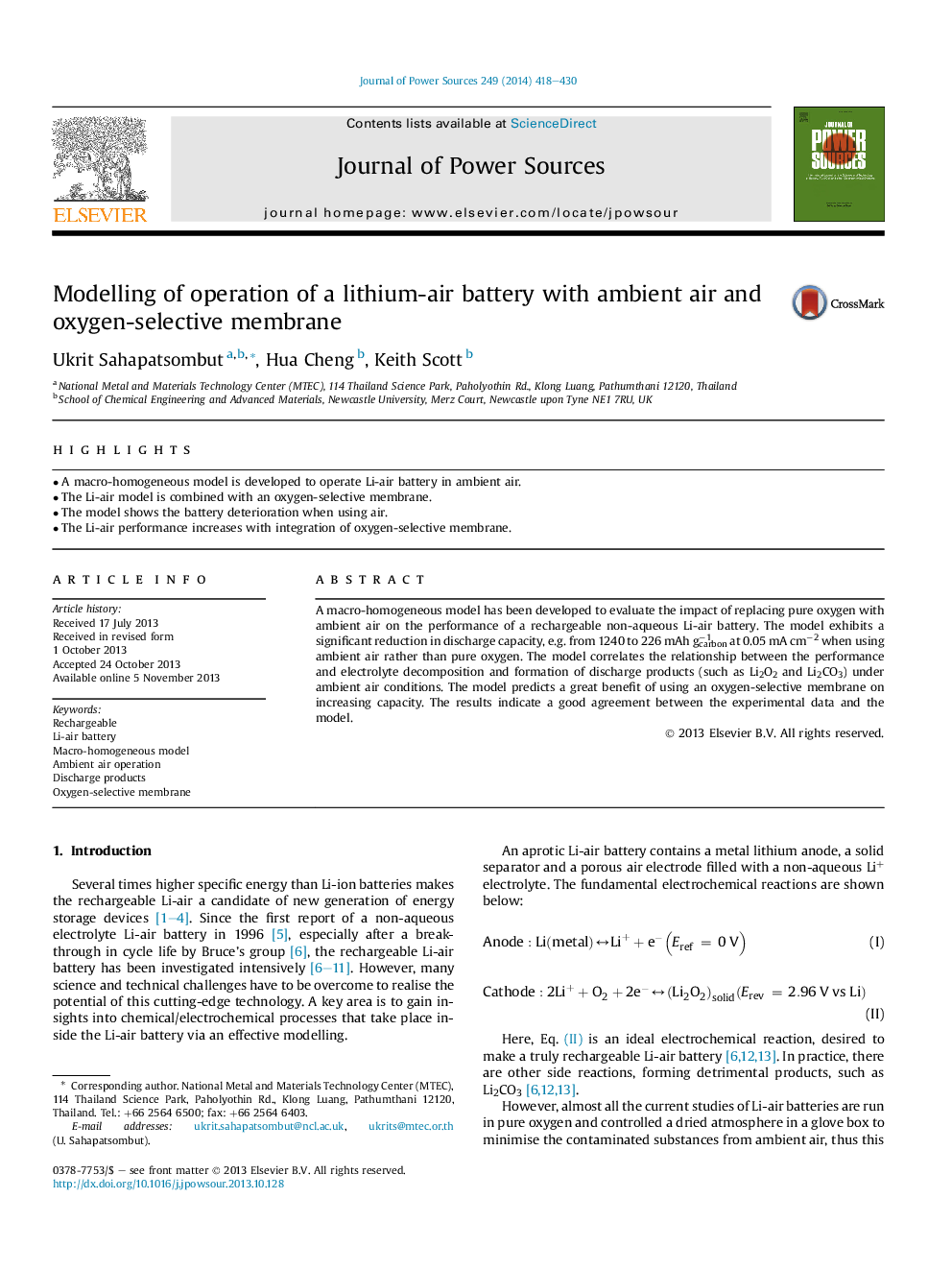| Article ID | Journal | Published Year | Pages | File Type |
|---|---|---|---|---|
| 7738262 | Journal of Power Sources | 2014 | 13 Pages |
Abstract
A macro-homogeneous model has been developed to evaluate the impact of replacing pure oxygen with ambient air on the performance of a rechargeable non-aqueous Li-air battery. The model exhibits a significant reduction in discharge capacity, e.g. from 1240 to 226 mAh gcarbonâ1 at 0.05 mA cmâ2 when using ambient air rather than pure oxygen. The model correlates the relationship between the performance and electrolyte decomposition and formation of discharge products (such as Li2O2 and Li2CO3) under ambient air conditions. The model predicts a great benefit of using an oxygen-selective membrane on increasing capacity. The results indicate a good agreement between the experimental data and the model.
Related Topics
Physical Sciences and Engineering
Chemistry
Electrochemistry
Authors
Ukrit Sahapatsombut, Hua Cheng, Keith Scott,
